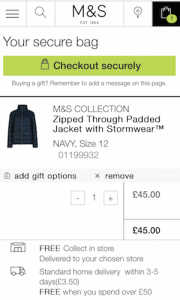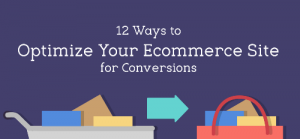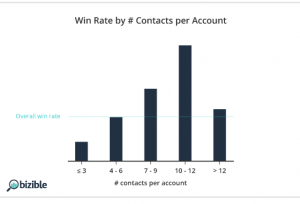When it comes to marketing, there are a myriad ways to reach your audience. Traditional forms of TV and radio commercials, billboards, and direct mail are still effective. However, in an age where everyone is online, it’s also crucial to pay attention to the digital landscape — especially when it provides you with an opportunity to advertise in ways that are (a) non-disruptive, and (b) can actually provide value to the reader, far beyond a purchase they can make from you.
Such is the case with email marketing. And while everyone knows how to send an email, doing so effectively as a marketer requires a lot of strategizing and testing.
What Is Email Marketing?
As the name states, email marketing is direct communications you send to your prospects and customers to promote your business. However, that’s only the tip of the iceberg. You don’t just send messages saying, “Buy now!” like with what you see on television.
There are many elements to this type of communication, all of them equally important — writing a subject line that’s compelling enough to cause people to open the email in the first place. Providing useful information that the reader can implement immediately, regardless of whether they make a purchase from you. Including a call to action so that they can learn more about your business, download an eBook, enroll in a webinar, or any other desired action.
And if they don’t take the desired action? No sweat. One of the elements of email marketing is lead nurturing. Keep courting them and offering them value.
How Email Marketing Works
Email marketing works by ensuring that your business stays at the forefront of your target audience’s mind. You can do so by crafting them to include different types of information:
- Educational
- Promotional
- Announcements
- Celebratory
- Industry updates
They’re sent regularly enough so that you remain top-of-mind whenever your audience needs related content and/or are ready to purchase. By the same token, they’re also spaced out enough so that they don’t become annoying and reported as spam.
Benefits of Email Marketing
Email marketing is effective because of its many benefits. In addition to being cost-effective and easy to launch, businesses who implement the practice use it for the following reasons:
You’re Emailing People Who Consented to Communications
As opposed to the millions of people who skip commercials on YouTube, pay a premium membership fee to bypass ads on digital platforms, or scroll through their phones while TV commercials are on, email marketing messages are sent to people who have voluntarily chosen to receive your communications. They already know your brand and are interested in learning more and staying in touch. Even if they signed up to your email list because you offered a discount code in exchange, that means they’re interested in what you’re selling.
Direct Access to Target Market
Adding to the point above, you’re reaching your target audience in their personal inbox. No intermediaries, editors, or fighting for ad space. It’s the difference between a keynote speaker talking to an audience vs having a one-on-one conversation with an attendee. You’re more likely to get their attention during the latter type of interaction.
Buyers Open at Their Own Convenience
Traditional forms of marketing can be disruptive. Even if someone is interested in the products or services, if they’re busy at the time they see it — or they’re simply not in the mood — the timing will make it unlikely that they’ll make give your content the focus it deserves. However, people check their emails when they have time to do so.
Ability to Personalize
Email marketing provides you with the ability to categorize your contacts and send each group information that’s relevant specifically to them. You can greet them by name, welcome them back, send them useful content based on inquiries they’ve made, suggest products based on previous purchases, or even just congratulate them on their birthday. All of these examples let readers know you’re not treating them like fungible goods.
Lead Generation
When you send your contacts information that’s relevant to them, they are more likely to become clients. This is because email marketing provides a platform for readers to remain engaged with you long-term. This can be due to them reading your messages, taking your quizzes, filling out surveys, or clicking through to your website to access assets you’ve described in the email.
You Can Measure Progress
Every time you send a marketing email, you can keep track of how many people open the email, how many click through to your website, and how many take the desired action that you compelled them to do in your email. All of these insights can help you identify what’s working and what needs to be modified. For example, a low open rate means you need to work on your subject lines. A low click through rate means you should try different call-to-action buttons.
How to Build an Email List to Get Started
Building your email list requires some creativity. You will first want to create attractive forms your audience will want to fill out. May we suggest HubSpot’s marketing hub or Mailchimp for this purpose? They are easy to use, provide plenty of templates, and no coding knowledge is required.
But wait! There’s more! While a handful of people may subscribe to your email list out of goodness of their heart, you’ll have to up your game to entice people to give you their contact information. This can take the form of:
- Discount codes
- eBooks
- Templates
- White papers
- Case studies
- Free enrollment in a webinar
- A signed book (if you’re an author)
- Samples
- Free demos
You can also hold contests and giveaways and promote them with pop-up forms, or create surveys or quizzes and require their email address to receive results.
Whatever you do, don’t buy an email list. While it may be tempting to do so if you’re starting from scratch, you’ll likely end up annoying a whole lot of people who never asked to hear from you. This increases the likelihood of getting reported as spam and of being contacted by unqualified leads. Remember, quality over quantity. It’s better to have a small number of people who are likely to make a purchase than hundreds of people wasting your time.
Email Marketing Terms You Should Know
Alright. So now that you know some basic email marketing benefits — and how not to go about doing it — it’s time to get familiar with common terms. Doing so will help you better understand what’s going on with your campaigns.
Email Service Provider (ESP)
An email service provider is the platform that enables you to create and store a list of email contacts, then send your marketing emails at pre scheduled times. Most of them come with additional capabilities designed to optimize your email campaigns. For example, they may provide automation, additional templates to create landing pages and forms, segment your contacts into categories (which allows you to send personalized emails), and do A/B testing.
Which ESP would work best for you depends on several factors:
- The number of contacts in your email list
- Scaling capabilities
- Whether they integrate with your existing tech stack
- User-friendliness
- Analytics
- Uptime
- Data recovery
- Security
- Customer support
Dynamic Content
This term refers to the ability to have your content automatically be triggered by certain user behaviors. For example, having a Welcome email to be deployed to a first-time subscriber, or follow-up information to repeat customers. Other examples include abandoned carts, happy birthday wishes, or any content referencing a previous interaction with a specific customer.
Open Rate
The open rate is how many people opened your emails. This is one of the most important metrics in any email marketing campaign. To calculate it, divide the number of emails that were read by the number of delivered emails. What constitutes a great open rate depends on your industry, so that will be part of your market research.
Click-Through Rate (CTR)
The click-through rate refers to how many people clicked on the call-to-action button. To calculate it, divide the number of people who clicked on your marketing emails’ CTAs by the number of opened emails. If your CTR is low within your industry’s standards, try different A/B testings: You can switch up the color and/or shape of the button, size, wording, and location. However, only try one changed element at a time, so that you can know for sure exactly what it is that’s working better than a previous iteration.
Deliverability
This term refers to how many people are actually receiving your emails. Factors that influence this number include a recipient’s inbox is full, emails getting reported as spam, unsubscribed users, and hard and soft bounces (as explained below). You can improve this rate by scrubbing your contacts list regularly.
Soft and Hard Bounces
Soft and hard bounces refer to whether the reason was undeliverable is due to a temporary situation (such as server downtime, a full inbox, or receiving multiple emails at the same time) or a permanent one (such as an email address no longer being active or the domain is expired).
When To Use Email Marketing
Email marketing should be used at every stage of your relationships with leads and customers, since you can tailor messages depending on the context:
- Build brand awareness
- Build credibility
- Look professional
- Nurture leads
- Inbound marketing
- Promote brand loyalty
- Increase website traffic
- Generate sales
- Keep your contacts informed
- Keep your contacts engaged
- Remain top of mind
So in a nutshell, if you have a business, you can benefit from well-crafted email marketing campaigns, regardless of industry.
Email Marketing Challenges
Ok. So now that you have a better idea of how an email marketing campaign should be crafted let’s take a look at some of the most common challenges. This will help you plan accordingly and focus a little bit more effort and energy to prevent some of them from happening:
Coming Up With Enticing Subject Lines
The shorter and snazzier the content, the harder it is to write it effectively. First of all, you want to keep it at a 60 character limit. Yet, you also want to tell the reader exactly what they’ll find when they open the email and personalize it.
Getting Marked as Spam
Email server providers tend to block certain types of email communications. These include messages that are in all CAPS, too much bolded content, or include too many exclamation or question marks. Other factors include triggering words such as “as seen on,” “Buy,” “Be Your Own Boss,” “XXX”, “business opportunity” (pretty much anything that sounds too commercial, pornographic, or like someone is trying to recruit you to an MLM).
Undelivered Emails
Emails can be undelivered for any of the soft or hard bounce reasons explained above. It’s also possible for emails to be undelivered if they have a typo, or if too many people have reported your emails as spam. When this occurs, a lot of your subsequent communications will bounce or end up in their spam folder. Your emails could also be undelivered if the email size is too large.
There are several ways to reduce your number of undelivered emails. Use double opt-in when asking people to sign up for your email list (e.g. by having them verify their account to ensure its authenticity). Double check that emails are spelled correctly and follow a correct format, and maintain a clean email list.
Unopened Emails
Unopened emails often have to do with ineffective subject lines. That said, keep in mind that what constitutes a good open rate varies greatly from industry to industry.
To increase your open rate, keep subject lines short and to the point, and avoid looking spammy (e.g. all caps, click bait, a million emojis). And always make sure that all of your communications are optimized for mobile devices. Most people go online from their phones or from a tablet when they’re not working. If your emails are hard to read, they’re simply not going to read them.
Unsubscribers
People will unsubscribe if you’re spammy, send irrelevant content, your emails are boring, or if none of your subject lines pique their interest. It’s also possible they only agreed to give you their email address simply for your lead magnet, and now that they got what they wanted, they no longer want to hear from you. Hey, it happens.
However, if you notice that you have a high unsubscribe rate, there are things you can do to improve it. Segment your contacts better, spend more time figuring out a way to provide useful, relevant content, and even straight out ask them for feedback regarding the frequency of your communications and what kind of information they’d like to receive.
Marketing Email Must Haves
While email marketing campaigns vary greatly depending on the industry and their purpose, successful ones have the following common denominators:
An Enticing Subject Line
This will always bear repeating: You can draft the most valuable, inspiring, panacea of a marketing email, but if the subject line falls flat, it’s going to remain unread. Keep it short, keep it accurate, and always be relevant. Include their name if you can. Avoid sounding like an overexcited teenager. Pique their interest. Think about what would compel you to open the emails if you were in their shoes.
Simple Copy
Get straight to the point. Only make your copy longer if it’s customer-centric and you’re actually providing value to them. Otherwise, anything that’s promotional or contains business announcements, keep it short and sweet. And avoid including too many links, as it could either direct them away from what you want them to do, or increase the likelihood of being suspected as phishing email by their email server.
Relevant Information
This is where contact segmentation comes in handy. New leads or customers are in need of different content than repeat customers. By the same token, someone who’s still researching their available options is going to be interested in different information than someone who’s ready to buy. Nobody likes to waste time. Be as helpful as possible by giving each reader exactly what they need.
A Strong Call to Action
Strong calls to action naturally should include action-oriented words. They should also let the user know exactly what will happen when they click on it. Download Now. Enroll Today. Schedule a Call. Add to Cart. Rate Your Experience. Being vague or confusing is not going to inspire action and will result in a low click-through rate.
An Unsubscribe Button
This one is not only the courteous thing to do, but as you’ll see further below, it’s also required by law. Email marketing is not about having a captive audience, and if they want to opt out of hearing from you, they are entitled to do so. It’s good practice to (a) make it as easy as possible, and (b) ask for a reason. They can either type it in, or you can include a multiple-choice template from your ESP. This will provide you with valuable insights as to what could be more effective moving forward.
Email Marketing Tools
While budget always comes into play when you choose an email service provider, try to look for options that include the most useful marketing tools, including:
Contact Segmentation
Sending cookie-cutter emails won’t win you any fans. There are different stages in the buyer’s journey, and you want to cater to each of them individually. Leads should be receiving different information than people who’ve already purchased from you. And once your contacts are segmented, draft ToFu, MoFu, and BoFu content that specifically addresses their location in the sales funnel.
Templates
There’s no need to reinvent the wheel. Opt for a platform with templates that match your brand. This will help you save time, as you can create your emails faster — and use existing templates in future marketing campaigns. Bonus points if the ESP has drag-and-drop capabilities for maximum user-friendliness.
Personalization
You want to have the ability to tailor the user’s experience around their specific circumstances. Therefore, this goes beyond simply greeting them by their first name. Include content, imagery, and offers that are applicable to the recipient. Include product recommendations based on their preferences. Craft VIP/Loyalty program emails, and send messages based on behavioral segmentation.
Automation
Automation capabilities are a must. They enable you to create an entire library of emails, then load them into your ESP to be sent automatically based on preset user behavior. You can also automate them to send at specific intervals, as well as to send dynamic content based on the contacts’ category.
Re-Engagement
When you haven’t had communications with former prospects or contacts, don’t just assume that they’ve lost interest. Make sure your ESP enables you to create re-engagement messages, such as “We miss you! Here’s a discount coupon to get you excited about your next purchase!”, send recommended products based on their previous purchases, useful content based on their interests, or even a customer feedback survey.
A/B Testing
Even if you have the best content team on the market and you’ve designed gorgeous emails that should be enticing to your target audience, the only way to know for sure whether they will be effective is to test them. Create two versions of them and send them to segmented contacts to see which one performs best. That said, only test one element at a time.
Email Marketing Laws and Regulations
Finally, you want to make sure that all of your email marketing campaigns follow all related laws and regulations. Some will apply only in specific geographical locations, while others are more industry-wide. Being well-versed in all of them will bring you peace of mind — and help you avoid penalties for violating them.
CAN-SPAM
The CAN-SPAM Act is a U.S. federal regulation that establishes that commercial email messages give recipients the right to unsubscribe from them. It applies to both B2B and B2C marketing emails, and violators are subject to penalties of up to $ 43,792 for each separate email. In addition, the Act requires the following:
- Each email must include factual and correct information, as well as identify the person or business who’s sending the message.
- You cannot use deceptive subject lines.
- It has to be clear that the message is a marketing/advertising communication.
- Include a valid physical address. This can be a street address or P.O. box.
- The opt-out option has to be clear and easy to recognize.
- You are required to honor all opt-out requests within 10 business days.
- You cannot include an unsubscribed email in any transferred email lists.
It’s crucial to know these legal requirements, since even if you hire a marketing agency to run your email campaigns for you, it is solely your responsibility to comply with the law.
CASL Laws
Canada’s Anti-Spam Law (CASL) prohibits sending marketing emails to recipients who have not consented to them. And once a person has agreed to receive them, each message must identify the person or business who sent it, include contact information, and include an option to unsubscribe.
Consent can be expressed or implied (by having an existing business relationship or an existing non-business relationship with the person who sent it). However implied consent is revoked upon the recipient communicating they do not wish to receive these emails.
GDPR
The General Data Protection Regulation (GDPR) regulates the processing of personal data of individuals who live in the European Union (EU). In fact, it specifically considers data protection to be a fundamental right. As such, all consumer data collected in websites and marketing emails must:
- Encrypt and anonymize data.
- Notify the authorities and consumers immediately in the event of a data breach.
- Allow consumers to opt out of receiving communications.
- Allow consumers to request and receive all information you have about them.
- Allow consumers to request to have their personal data deleted.
In addition, businesses are required to create and implement internal data security policies, as well as conduct regular data protection assessments. In fact, the GDPR requires that all businesses designate someone responsible for ensuring compliance.
If your business is outside of the European Union but conducts business there, you are required to appoint a representative within the EU.
Privacy and Electronic Communications Regulations
The Privacy and Electronic Communications Regulations (PECR) Act applies to entities that conduct business in the United Kingdom (UK). It applies to any marketing communications: phone calls, texts, and emails. When specifically addressing marketing emails, the act requires that:
- You only send communications to individuals who have specifically consented to it.
- There’s a consent exception for previous customers, but you must allow everyone the option to opt out.
- You must always include your identity.
- You must always provide an address and a way to contact your business.
(37)





